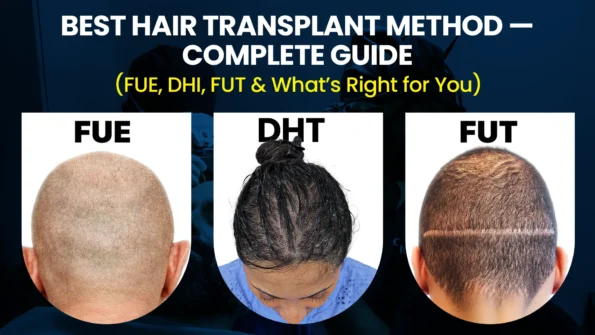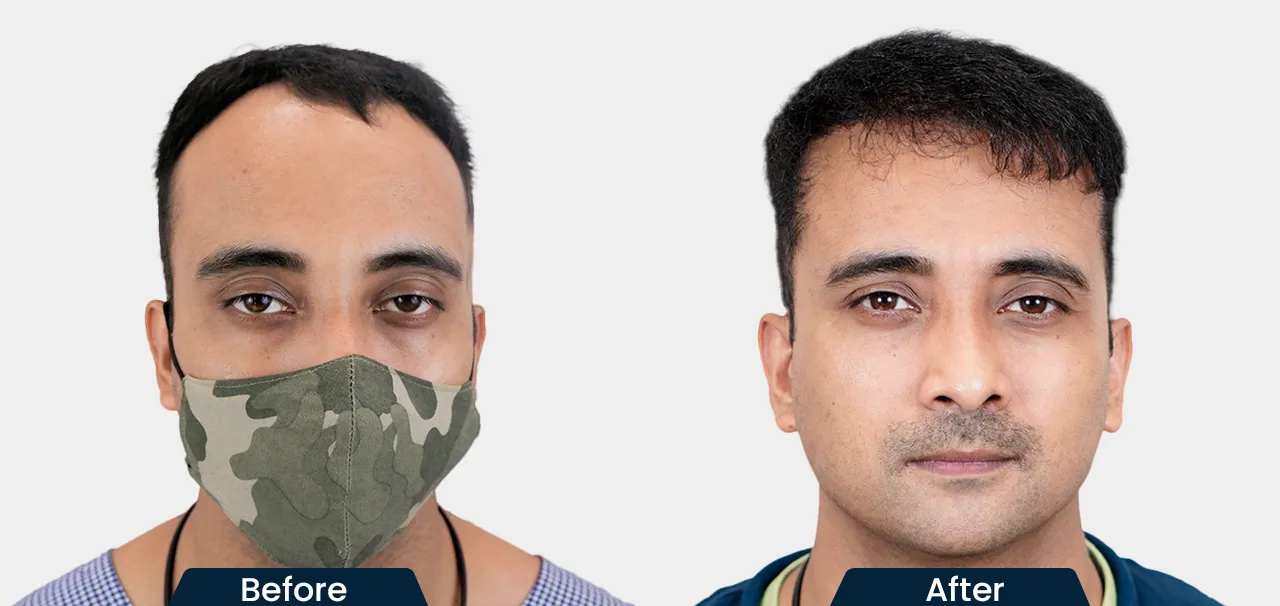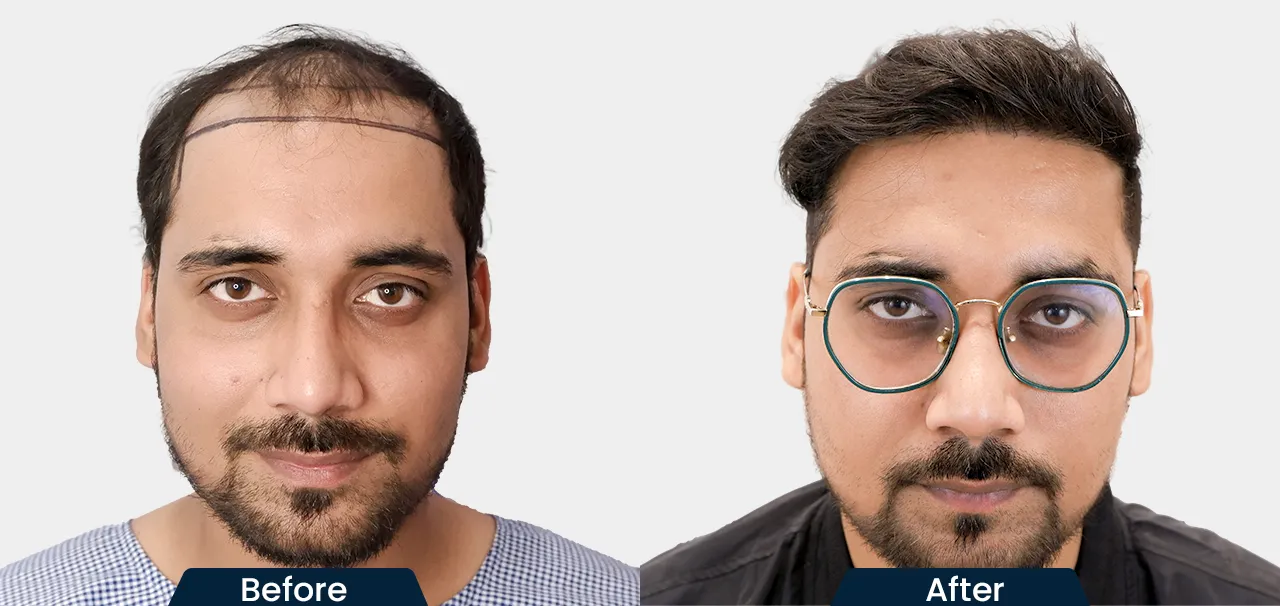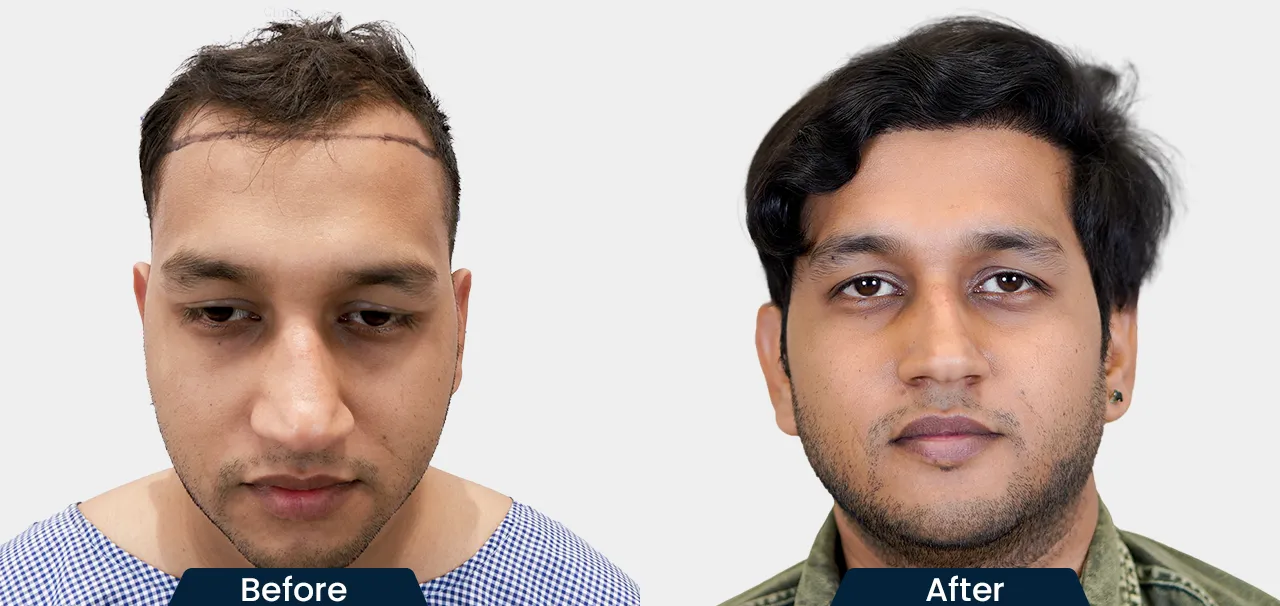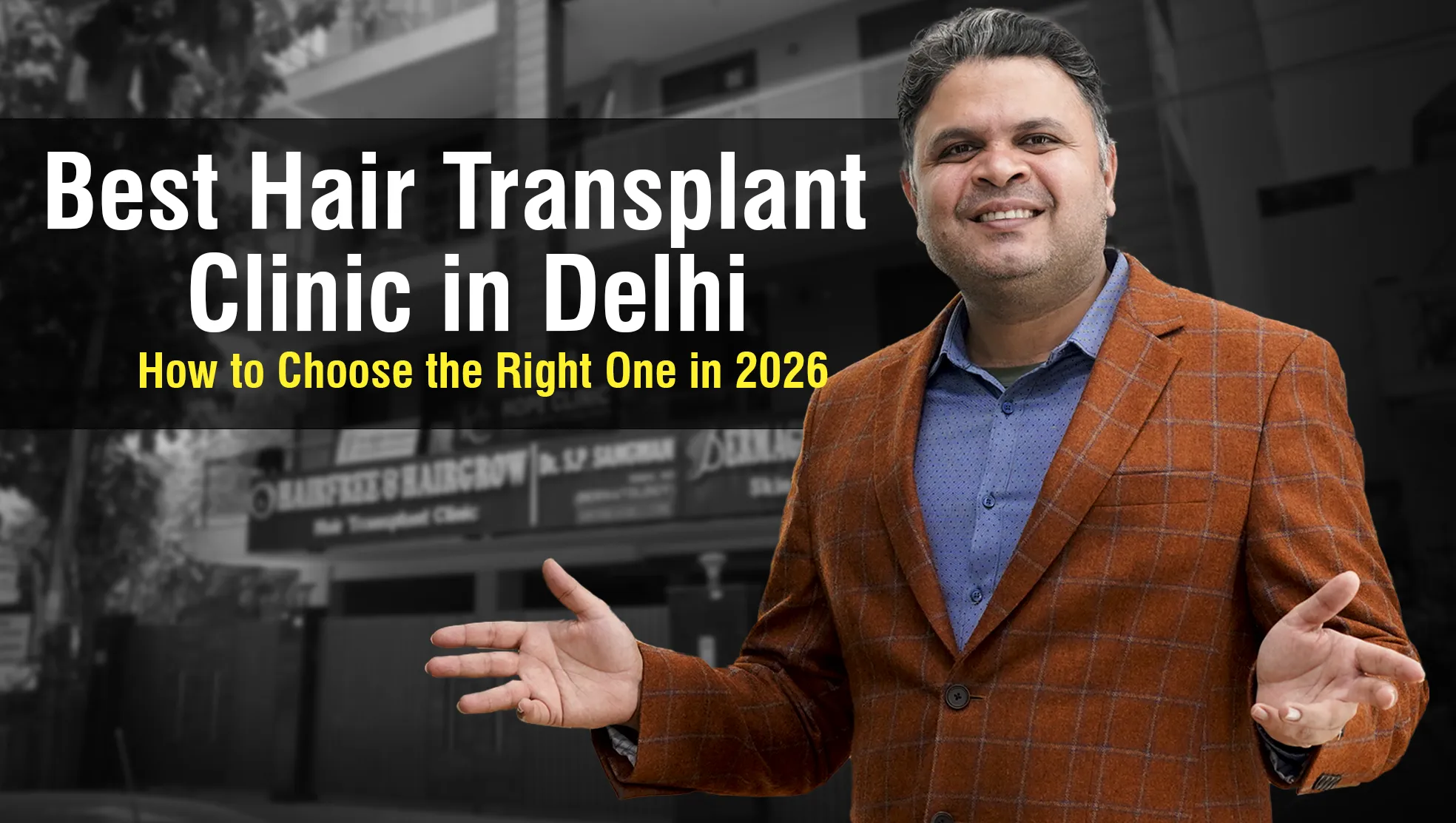Hair loss isn’t just a cosmetic concern it’s something that can quietly affect your confidence, self-image, and everyday life. Whether it’s thinning hair, a receding hairline, or complete baldness, many people find themselves searching for the most effective hair transplant method that gives permanent, natural, and safe results.
The good news? Hair restoration has come a long way. Gone are the days of artificial-looking hair plugs and visible scars. Today, advanced hair transplant techniques like Stem Cell FUE, BIO FUE, BIG FUE, DHI, and Robotic Hair Transplant deliver results so natural that even your barber won’t notice the difference.
But with so many modern techniques available, one question remains:
Which hair transplant method is truly the best for you?
In this detailed guide, we’ll break down every leading technique from Stem Cell FUE’s regenerative power to the precision of DHI, explaining how each works, their benefits, and what makes them stand out. By the end, you’ll know exactly which hair transplant method matches your goals, scalp condition, and budget.
A Short History — How We Got Here
Modern hair restoration evolved from crude grafting methods of the mid-20th century into the follicular-unit techniques used today.
The FUT (strip) approach became widely used in the 1990s because it allowed surgeons to harvest many grafts and create natural-looking hairlines.
In the 2000s, FUE rose to prominence: instead of removing a strip of scalp, surgeons began extracting individual follicular units, minimizing linear scarring.
More recently, DHI (a variation of FUE using an implanter pen) and robotic systems have further refined precision and control. These shifts emphasize less visible scarring, improved naturalness, and quicker recovery.
Stem Cell FUE Hair Transplant Treatment
A Stem Cell Hair Transplant is an advanced regenerative hair restoration procedure that combines stem cell therapy with FUE (Follicular Unit Extraction) technology. This hybrid approach aims not only to implant new hair follicles but also to stimulate natural hair regrowth using your body’s own stem cells.
Here’s how it works:
- Stem Cell Harvesting – Stem cells are carefully collected from either adipose (fat) tissue or bone marrow.
- Processing – These harvested cells are then processed in a sterile laboratory environment to isolate the most potent regenerative cells.
- Injection & Implantation – The stem cell concentrate is injected into the scalp at areas experiencing hair thinning or baldness. Additionally, these stem cells are combined with implanted hair follicles during the FUE hair transplant, accelerating recovery and improving graft survival.
This dual-action technique not only implants new hair but also reactivates dormant follicles, resulting in denser, healthier, and long-lasting hair growth.
Key Benefits of Stem Cell FUE Hair Transplant
- Accelerates healing and recovery
- Stimulates dormant follicles for new growth
- Improves scalp health and thickness
- Increases graft survival rate
- Provides long-term, natural results
At Hairfree & Hairgrow Clinic, the Stem Cell FUE technique is performed by experts using advanced regenerative protocols, ensuring the highest precision and safety for every patient.
BIG FUE Hair Transplant – The Future of Hair Restoration
Another breakthrough in hair transplantation is the BIG FUE (Biological Implantation of Graft) technique, a patented and advanced version of FUE that delivers natural-looking results with maximum graft survival.
What Does BIG FUE Stand For?
B = Bio-Advanced
I = Implanter
G = Graft with Gro Factor & Graft Chiller
The BIG FUE technique is designed to combine biological enhancement, advanced implanter tools, and precise temperature control, offering a superior experience and outcome.
How Does BIG FUE Work?
- Graft Extraction: Individual hair follicles are extracted using micro-punch tools that minimize trauma to the donor area.
- Bio Enhancement: Grafts are treated with special growth factors and biological solutions that preserve their vitality.
- Implanter Pen Technique: Using advanced implanter pens, each graft is placed at the correct angle, depth, and direction for a natural appearance.
- Graft Chiller: The use of temperature-controlled graft storage ensures that hair follicles remain fresh and viable during the procedure.
Advantages of BIG FUE
- Extremely high graft survival rate
- Minimal hair graft damage or wastage
- Suitable for GIGA sessions (5000+ grafts in a single sitting)
- Faster healing with no visible scars
- Affordable despite being a high-end procedure
The BIG FUE method stands out as one of the most advanced and result-oriented hair transplant techniques in India, preferred by patients seeking dense, natural, and permanent results.
I-FUE Hair Transplant – Precision with Affordability
The I-FUE (Implanter FUE) is another innovative hair transplant technique by Hairfree & Hairgrow Clinic, designed for patients looking for affordable yet highly effective solutions.
What Makes I-FUE Different?
I-FUE uses a specialized implanter device to directly insert extracted hair follicles into the scalp without creating separate incisions. This results in:
- Shorter procedure time
- Less bleeding
- Minimal trauma to the scalp
- Better graft placement and density
Key Benefits of I-FUE Hair Transplant
- Affordable compared to robotic or advanced FUE methods
- Quicker recovery with less post-surgery discomfort
- No linear scars (unlike FUT)
- Ideal for men and women with early-stage hair loss
The Implanter FUE technique is widely regarded as one of the most precise and comfortable methods for achieving natural results.
BIO FUE – The Perfect Blend of Science and Nature
BIO FUE is one of the first advanced versions of Follicular Unit Extraction (FUE). This method enhances the standard FUE by using biological serums rich in growth factors to rejuvenate the scalp and boost graft survival.
How BIO FUE Works
- Extraction: Individual hair follicles are extracted from the donor area using a micro-punch tool.
- Bio Solution Treatment: The grafts are then soaked in growth factor-enriched bio solutions before implantation.
- Implantation: Treated grafts are placed into the bald or thinning areas for healthy regrowth.
Why Choose BIO FUE?
- Boosts graft survival and natural growth
- Enhances scalp nourishment
- Reduces post-surgery inflammation
- Provides denser and softer results
- No linear scars, less bleeding, faster recovery
BIO FUE combines modern FUE technology with biological therapy, making it a great choice for those seeking natural, permanent hair restoration with minimal side effects.
FUT Hair Transplant (Follicular Unit Transplantation)
The FUT hair transplant, also known as the “strip method,” is one of the earliest forms of surgical hair restoration.
How It Works
A strip of skin containing hair follicles is removed from the back of the head, and the follicles are then separated under a microscope and implanted into the bald areas.
Pros
- Suitable for patients needing a large number of grafts
- Can achieve high density in one session
Cons
- Leaves a linear scar on the donor area
- Longer healing time compared to FUE
- May cause post-surgery tightness or discomfort
While effective, FUT is gradually being replaced by modern, less invasive techniques like FUE, BIO FUE, and DHI.
DHI Hair Transplant (Direct Hair Implantation)
DHI (Direct Hair Implantation) is a modified version of FUE that uses a Choi Implanter Pen to extract and implant hair simultaneously.
How It Works
- No need for incisions or channel creation
- Hair follicles are implanted directly using the DHI pen
- Ensures precise angle, direction, and depth
Benefits
- Maximum control and accuracy
- Quicker procedure and recovery
- No visible scarring
- Extremely natural hairline design
DHI is widely regarded as one of the most precise hair transplant techniques but is slightly more expensive due to the technology and skill required.
Robotic Hair Transplant
Technology has brought automation into hair restoration with robotic-assisted FUE systems, such as the ARTAS Robot.
How It Works
A high-precision robotic arm identifies and extracts the healthiest grafts using AI-guided algorithms. The surgeon then implants these grafts manually.
Pros
- Ultra-precise graft selection
- Minimizes human error
- Faster extraction process
Cons
- High cost
- Limited availability in India
- Still requires manual implantation
Robotic FUE is ideal for patients seeking state-of-the-art, precision-based restoration.
FUE vs FUT vs DHI vs Stem Cell Transplant – Which Is Better?
Technique | Scarring | Recovery Time | Natural Results | Best For |
FUT | Linear scar | 10–14 days | Moderate | High graft requirement |
FUE | Minimal dots | 5–7 days | Excellent | Most common choice |
BIO FUE | No scar | 5–7 days | Excellent | Moderate hair loss |
BIG FUE | No scar | 5–6 days | Exceptional | High-density restoration |
Stem Cell FUE | No scar | 5–6 days | Regenerative & natural | Severe hair loss |
DHI | No scar | 3–5 days | Ultra-natural | Hairline design & precision |
Robotic FUE | Minimal | 5–6 days | Excellent | Tech-assisted extraction |
Which Hair Transplant Method Is Best for You?
There’s no single “one-size-fits-all” method. The best hair transplant technique depends on your:
- Extent of hair loss
- Donor hair density
- Scalp condition
- Budget and recovery preference
- Desired results
For most patients today, Stem Cell FUE, BIG FUE, and BIO FUE offer the most advanced, natural, and permanent results with minimal pain and downtime.
So, What’s the Verdict? The Factors That Truly Matter
As you can see, there is no single “best” technique. The best method is the one that is best for you. The decision hinges on a professional evaluation of these key factors:
- The Extent of Your Hair Loss: Are you just receding at the temples, or do you have significant thinning across the crown and top? Advanced baldness (Norwood scale 5-7) might make you a better candidate for FUT or a BIG-FUE session to get the required coverage.
- Your Donor Area Density: The quality and density of hair at the back of your head is the single most important factor. A surgeon needs to assess if your donor area can sustainably provide the number of grafts you need without looking thin itself.
- Your Hairstyle and Lifestyle: Do you love a buzz cut? Then FUE or DHI is the only way to go to avoid a visible scar. Are you able to take a week or two off work to recover comfortably?
- Your Budget: Hair transplants are an investment in your confidence. While you shouldn’t choose based on price alone, your budget will play a role. FUT is generally more affordable, while DHI is a premium service.
- The Surgeon’s Skill: This is the most critical factor of all. An average surgeon with the best DHI technology will deliver worse results than a great surgeon using the classic FUE technique. The surgeon is the artist. Their experience, aesthetic sense in designing a natural hairline, and technical skill in handling grafts are what create a truly undetectable result.
Your Most Important Step: The Consultation
Before you get lost in technical details online, your first and most crucial step is to schedule a consultation with a qualified and experienced hair transplant surgeon. During this meeting, they will:
- Analyze your scalp and hair loss pattern.
- Evaluate your donor area.
- Listen to your goals and expectations.
- Recommend the technique(s) best suited to your unique situation and explain why.
Don’t hesitate to ask questions. A good surgeon will be happy to show you before-and-after photos of patients with similar hair loss to yours and will be transparent about the entire process.
Why Choose Hairfree & Hairgrow Clinic?
With over 15 years of expertise and presence in major Indian cities like Pune, Mumbai, Ahmedabad, Delhi, Surat, Hyderabad, Indore, and Kolkata, Hairfree & Hairgrow Clinic has earned its name as one of India’s most trusted hair restoration centers.
Their team of experienced doctors uses state-of-the-art equipment, FDA-approved solutions, and modern techniques such as Stem Cell FUE, BIG FUE, and BIO FUE to ensure long-term, natural-looking results.
FAQs
1. Which hair transplant method gives the best results?
Stem Cell FUE and DHI are considered the most advanced and effective methods. They offer natural results, faster recovery, and minimal scarring compared to older techniques like FUT.
2. Is Stem Cell Hair Transplant permanent?
Yes. Stem Cell FUE helps regrow hair naturally and strengthens existing follicles. The results are long-lasting and look natural, though maintaining scalp health is important.
3. What is the safest hair transplant method?
BIO FUE and Stem Cell FUE are among the safest options. They use your body’s own cells and growth factors to improve healing and reduce side effects.
4. How long does it take to see results after a hair transplant?
You can expect visible hair growth in 3 to 4 months, with full results appearing in 9 to 12 months depending on your hair type and treatment method.
5. Can hair transplants look 100% natural?
Yes. Techniques like DHI and BIG FUE ensure perfect angle, direction, and density, making your new hair blend seamlessly with existing strands.
Written By
MBBS, DDV
Dr. Nipun Kesarkar is a renowned hair restoration expert specializing in the best hair transplant method. With advanced techniques and personalized care, he ensures natural, long-lasting results, helping patients regain confidence through effective and safe hair transplant solutions.
Disclaimer
We’ve made all possible efforts to ensure that the information provided here is accurate, up-to-date and complete, however, it should not be treated as a substitute for professional medical advice, diagnosis or treatment. See Detailed Disclaimers Here.

